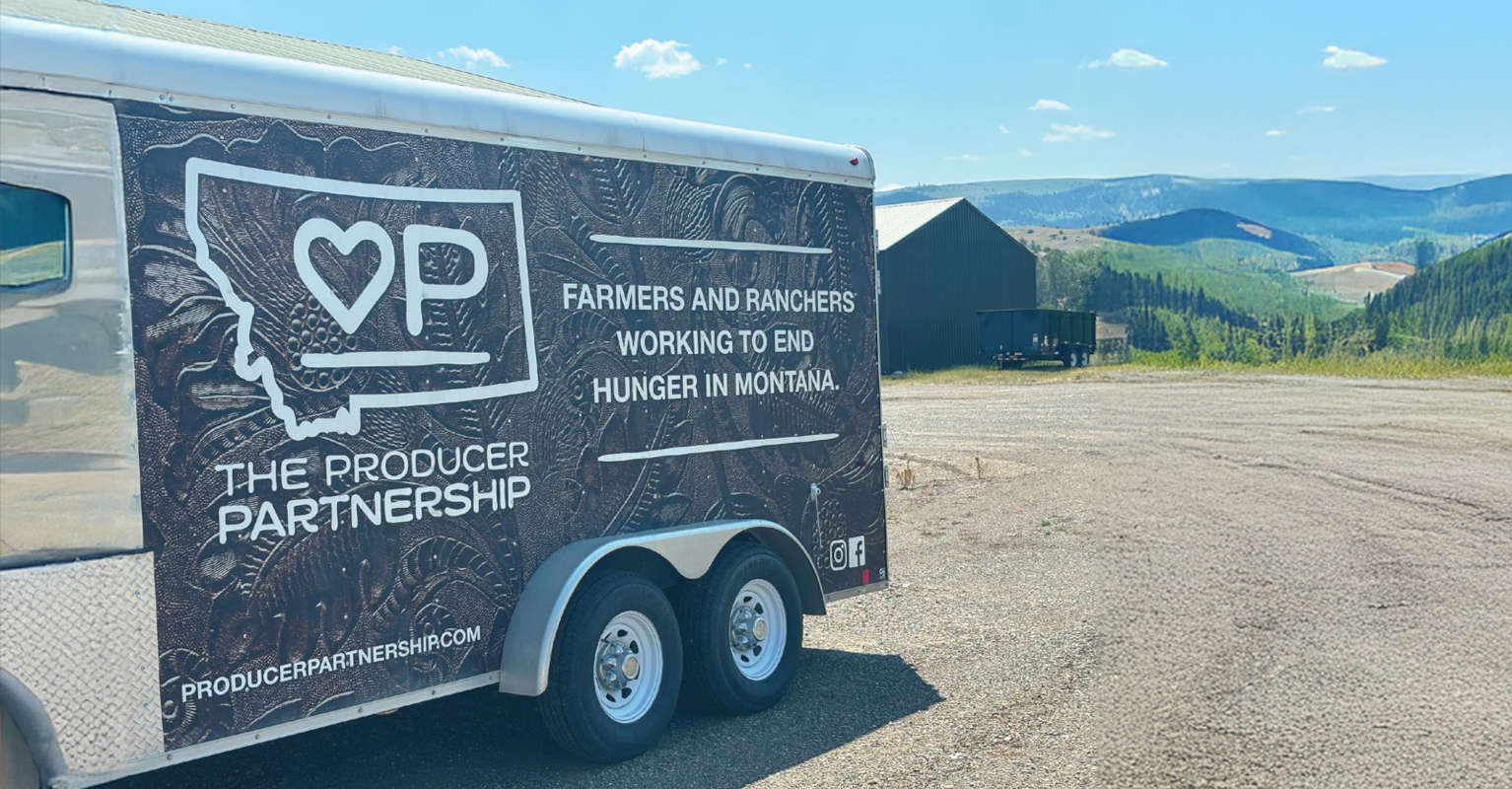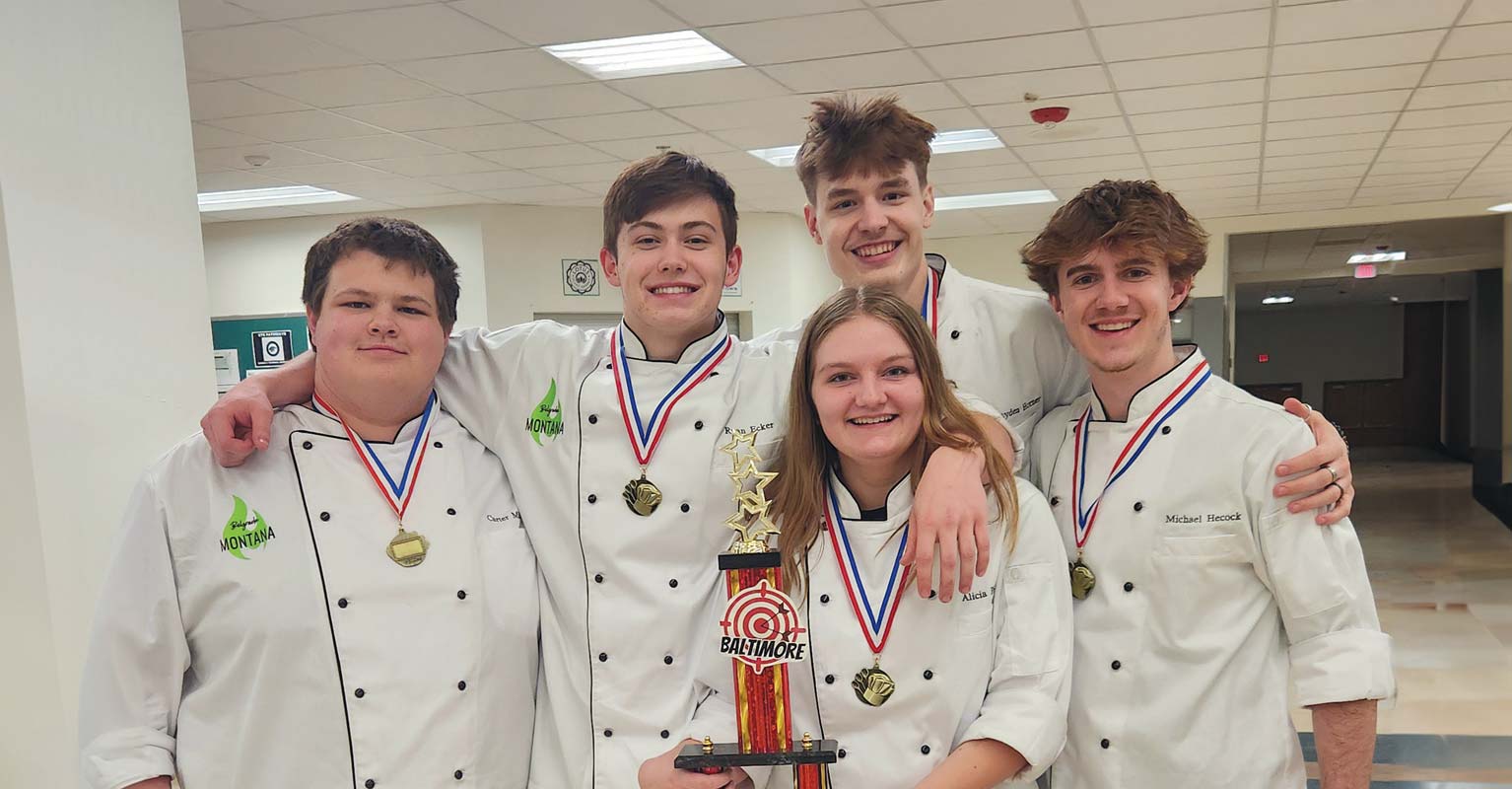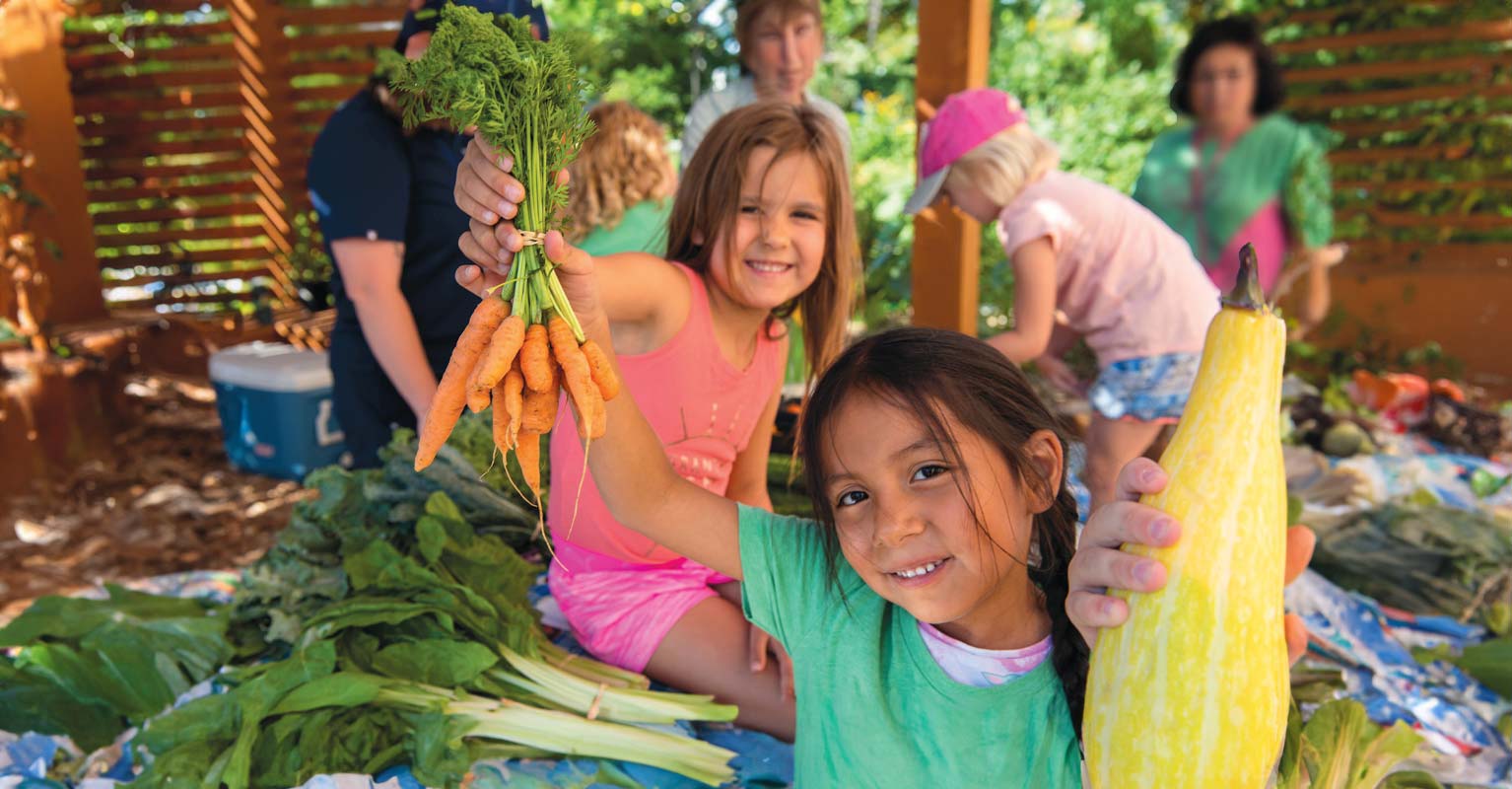HRDC Gleans Food
Editor’s Note: For this issue’s installment of Community Voice and A Whole Montana, we take a look at HRDC’s food access program, how the organization is working with the community to make healthy food available to those in need, and how managers are reducing food waste within the system. This comes as HRDC settles into its new home at 206 E. Griffin Dr. in Bozeman. The new building includes a no-cost grocery market (the Gallatin Valley Food Bank), the Fork & Spoon pay-what-you-can restaurant, and public meeting space. From here, HRDC will continue to offer programming that supports the community
For the last 22 years, Gallatin Valley Food Bank (GVFB) operated out of a warehouse on a quiet street in north Bozeman. The building’s exterior was a muted brown, the dull color belying the energy inside: Colorful paintings of fresh produce backdropped busy volunteers, children coloring with crayons while their parents shopped, and shelves lined with food. In the face of a rapidly growing community and mounting food insecurity, GVFB’s Food Rescue Program has facilitated creative and collaborative solutions, and will continue to do so from its new location at 206 E. Griffin Dr.
“I think it’s important for people to understand that we’re all a part of the food system here. It would be easier for stores to throw food in the dumpster, but they choose not to. There has to be buy-in.” —Jon Horn, operations manager, Gallatin Valley Food Bank
Mathia Jacobson is the food rescue coordinator for GVFB, which is managed by the Human Resource Development Council (HRDC). Jacobson oversees the program’s day-to-day operations, which include rounding up food from a roster of grocery stores and businesses that donate daily or weekly.
With a crew of staff and volunteers, Jacobson ensures food otherwise destined for the landfill gets a chance at a better fate. According to GVFB Operations Manager Jon Horn, “Our goal is to reduce food waste while also feeding thousands of people every year.”
The Food Rescue Program operates five days a week and serves to glean food for the food bank. All rescued food is sorted by expiration date and quality. No food is wasted. Food that is fresh and safe to eat gets sorted and placed on shelves every day before GVFB opens to its customers. Everything else gets sorted into animal fodder, which is donated to local family farms (and on occasion, more novel operations like Montana Grizzly Encounter), or is composted by YES Compost––both account for about 5 percent of the program’s redistribution.
With 95 percent of its intake ending up in homes and pantries, not to mention the diversion of millions of pounds of food from the landfill, the Food Rescue Program is a quiet success. “Last year, [the program] brought in more than 900,000 pounds out of the 2 million pounds of food we distributed,” says GVFB Food and Nutrition Director Jill Holder. The remaining 1.1 million was either donated by individuals or purchased by GVFB.
Think of food bank and you likely imagine efforts such as Can the Griz, where individuals come together each year to donate canned goods and non-perishables. In contrast, Horn describes the Food Rescue Program as “more behind the scenes”—however, it plays a critical role in rounding out the shopping experience and increasing the amount of fresh, nutritious food available.
According to the Montana Food Bank Network, one in 12 Montanans are currently experiencing food insecurity. “The need is always there, and it’s growing.” Jacobson says. As part of a wider HRDC strategy to adapt to the needs of a changing community, GVFB recently moved to its new location, fondly called Community Commons. With a smile, Horn describes how this location will allow them to store more food and, importantly, create a space that looks and feels more like a grocery store.
He says this just before the move, standing amidst the hustle and bustle of the former smaller space: families push shopping carts, volunteers and staff chat while stocking shelves, smiling faces and laughter blur and echo together to create an atmosphere that is truly warm.
“I think it’s important for people to understand that we’re all a part of the food system here,” says Horn. “It would be easier for stores to throw food in the dumpster, but they choose not to. There has to be buy-in.”
The collaborative efforts that create our local food system––from those who grow or sell food, to those who purchase, donate, or receive it––are reflected in the microcosm of the Food Rescue Program, demonstrating beautifully that where there’s a need, there can also be a need that’s met.




